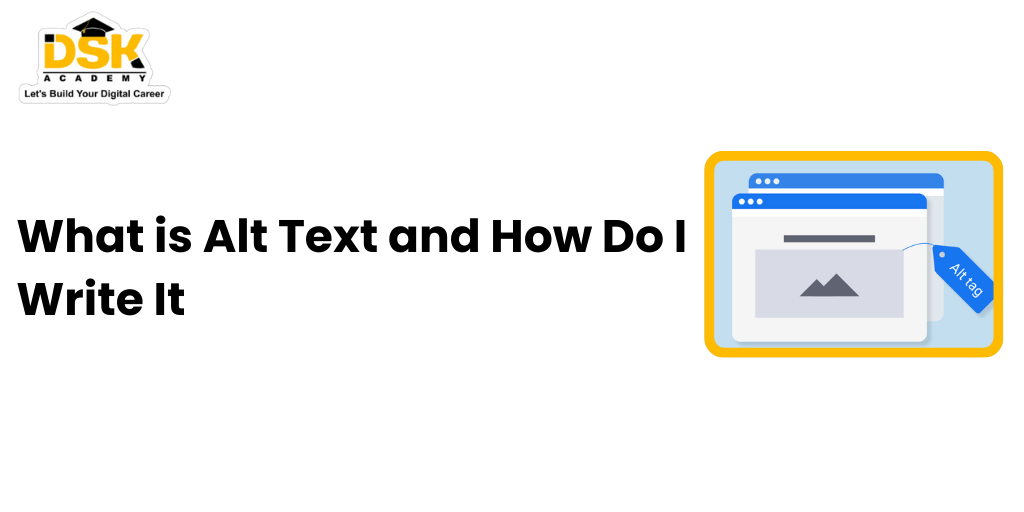Alternative Text or ‘Alt Text’ is the HTML code of the image to give the meaning to the image to the search engine, screen readers, and those who are unable to see the image. It is the text-based format of the image that allows visually impaired readers to understand what the image is all about through screen readers or other assistive technologies. Also, alt text is important in search engine optimization (SEO) because it allows search engines to know the image’s relevance on the website page.
How to write Alt text effectively?
An effective alt text needs a balance of concise, descriptive, and relevant content. Below are some guidelines to help you write the alt text effectively.
Be descriptive: Mention the function and content of the image properly. Consider writing for a person who can’t see. Your message should include the purpose and context. For instance, instead of writing ‘dog,’ you can write ‘Golden Retriever fetching the ball.’
Be concise: While an alt text should be descriptive, at the same time, it should be straightforward, too. Write an alt text in 125 characters or less. For instance, you can write a smiling woman holding a cup of coffee
instead of a smiling woman with brown hair and wearing a blue colour t-shirt while having a cup of coffee.
Include keywords: You must insert relevant keywords in the alt text to make it SEO-friendly. However, don’t stuff too many keywords, as it can impact the user experience and search engine ranking. For instance, ‘Students attending digital marketing course in a classroom’ (Keyword is digital marketing course).
Avoid redundancy: Never start any alt texts with the phrase ‘image of’ or ‘picture of.’ With a screen reader, people will already know that it is an image, so you can avoid such redundancy. For instance, write ‘a group of children eating ice cream instead of ‘An image of a group of children eating ice cream.’
Context matters: You must consider the image context, as your alt text should revolve around the overall page content. For instance, for a blog talking about baking cookies, an image with cookie dough can have the alt text as ‘Cookie dough with chocolate chips ready for baking.’
Functional Images: For images like buttons, graphs, or icons, you must write the message that a particular image conveys. For instance, for the search button, use alt text as ‘search’ for a bar chart to write some key points and trends.
Conclusion
Alt text is important both from SEO and users’ points of view. By giving meaningful descriptions to your images you can improve the user experience of visually impaired persons and this will enhance your website’s search engine performance. Your alt text must contain image context and content and avoid redundancy in that. Your alt text must contain keywords, but avoid stuffing it too much. With proper alt text, you can make your website content more inclusive and discoverable.

